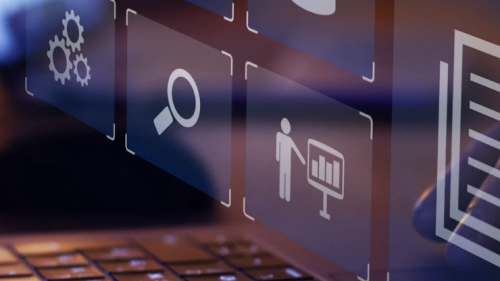In a culture ever more dependent on technology and the internet—for education, work, entertainment, and connection to our communities—it should come as no surprise that people behave online much as we do in person: with a mixture of kindness and cruelty, combining the best and worst of human intentions.
The worst are often expressed through cyberbullying, which a leading national organization committed to fighting it describes as “online harassment … social terror by technology.”1 Read on to explore this digital-age development and several negative effects of cyberbullying.
Bullying and Cyberbullying
On its website, the American Society for the Positive Care of Children (ASPCC) defines bullying as “repetitious, unwanted, aggressive behavior that involves a real or perceived power imbalance.”2 The site notes that, like bullying, cyberbullying can take many forms, but all instances of cyberbullying include repeated aggressive behavior (“rumors, embarrassing pictures, harassing messages, fake profiles and other aggressive behavior”) online or on a digital platform—such as text message, email, social media, video games, websites and online chat. A cyberbully may pretend to be another person online in order to harass others. Perpetrators spread lies, trick people into revealing personal information, send or forward hostile messages and post pictures of victims without their consent.3
While similar to face-to-face means of bullying, cyberbullying differs from them in several important ways:4
- It doesn’t stop when the victim is in the safety of his or her own home. Cyberbullying can be relentless, prohibiting any escape for the victim.
- A child who is bullied at school or on the playground knows who the perpetrator is, and there are adults nearby who can provide help. In contrast, cyberbullying takes place where there are no responsible protectors or moderators.
- The anonymity made possible by technology often leaves the victim feeling that s/he has no recourse. Anonymity reduces cyberbullies’ empathy for their victims and allows them to continue attacking, and social media websites often provide opportunities for them to do so. Private group chats or pages of which the bullies’ scapegoat is unaware, for example, can enable bullies to victimize their targets. When the chats and pages are made public, the targeted individual—whether child or adult—faces an onslaught of paranoia, embarrassment and feelings of isolation. Text messages and group chats can be used to the same ends. Gaming and other hobbyist forums also turn into cyberbullying arenas. One of the largest and most visited social websites in operation today is set up so that its users are nearly completely anonymous.
Negative Effects of Cyberbullying
According to StopBullying.gov, a child who is cyberbullied is likely to be bullied at school, as well. Children who are bullied are more likely than their non-bullied peers to miss, skip or drop out of school; those who stay in school are more likely to suffer academically, with decreased grade point averages, standardized test scores and class participation.5
Research shows that the many negative consequences sustained by victims of cyberbullying include:2
- Increased suicide attempts
- Higher rates of depression and anxiety
- Reduced feelings of self-worth
- Difficulty sleeping
- Increased instances of bed-wetting
- Increased physical issues such as headaches and stomachaches
- Increased instances of eating disorders, which are specifically found to be more prevalent in girls involved in bullying relationships
Some bullied children have retaliated violently. In 12 of 15 school shooting cases in the 1990s, for example, the shooters had been bullied themselves.5
Bullying does not solely harm those who are targeted. StopBullying.gov notes that perpetrators are more likely to:5
- Get into fights
- Vandalize property
- Drop out of school
- Engage in early sexual activity
- Abuse alcohol and other drugs in adolescence and adulthood
- Have criminal convictions and traffic citations as adults
- Be abusive toward their intimate partners, spouses or children as adults
Cyberbullying Among College and University Students
Sometimes referred to as electronic victimization, cyberbullying remains under-recognized when perpetrated between college students. It’s not a surprising occurrence in that context, however, as college students are among the most frequent users of digital technology.
Cyberbullying in college has notably included electronic criticisms of identity, sexual harassment, and “outing” of private information such as sexual orientation or health diagnoses (such as psychiatric conditions or sexually transmitted infections) without consent.6
We don’t tend to describe the actions of legal adults as bullying, but harassment, hazing, intimidation, stalking and other forms of online aggression between college students have had shattering consequences. Among them:7
- In 2014, University of Wisconsin-River Falls straight-A student Alyssa Funke took her own life after enduring harassment online after it was revealed that she had appeared in an adult video
- In 2010, Rutgers University freshman Tyler Clementi jumped to his death from the George Washington Bridge after he learned that his roommate and a friend had secretly recorded an intimate encounter he had with another man (and posted about it online)
In 2019, the National Center for Biotechnology Information published the article “Cyberbullying and Its Influence on Academic, Social, and Emotional Development of Undergraduate Students” by Dr. Yehuda Peled. It noted these effects of cyberbullying among college students:
“Victims generally manifest psychological problems such as depression, anxiety, loneliness, low self-esteem, social exclusion, school phobias and poor academic performance, family problems, school violence and delinquent behavior, which brings them to experience suicidal thoughts as a means of escaping the torture.
Moreover, research findings have shown that cyberbullying causes emotional and physiological damage to defenseless victims as well as psychosocial problems including inappropriate behaviors, drinking alcohol, smoking, depression and low commitment to academics.
The victims of cyberbullying, under great emotional stress, are unable to concentrate on their studies, and thus their academic progress is adversely affected. Since the victims are often hurt psychologically, the depressive effect of cyberbullying prevents students from excelling in their studies.”8
Cyberbullying of Adults
While it’s easy to think of cyberbullying as something that only happens to children and students—solely an online extension of playground abuse—adults are experiencing it in frightening numbers.
In September 2020, the Pew Research Center surveyed adults in the United States to measure their experience with six key forms of online harassment. The study9 found that 41% of Americans have personally experienced cyberbullying in at least one of these forms: physical threats, stalking, sustained harassment, sexual harassment, offensive name-calling and purposeful embarrassment. Of those six, the first four are regarded as the more severe, and 25% of those adults surveyed reported experiencing at least one of them. That response is up from 15% in 2014 and 18% in 2017. Further, those who have been the target of cyberbullying are more likely today than in 2017 to report that their most recent experience involved more varied types and more severe forms of it.
Cyberbullying can be as harmful, if not more so, to adults as it is to children and college students. The Cybersmile Foundation, an award-winning nonprofit organization committed to digital wellbeing and tackling bullying and abuse online, states on its website that the impact of “an internet-based, adult hate campaign can be devastating—cyberbullying, reputation attacks and harassment online have all seen lives lost, careers and businesses damaged, social and professional reputations destroyed, and entire families broken beyond repair.”10 To illustrate this point, the site links to an article about Leanne Morrison, a 23-year-old mother who committed suicide after facing “vicious online abuse;”11 another that addresses the impact of cyber attacks on corporate reputations; and a third documenting one mother’s struggle against months of online attacks from her ex and the suicidal depression to which they drove her.
Join the fight for justice
The Cybersmile Foundation, StopBullying.gov, STOMP Out Bullying™ and other organizations are working to make life online safe and productive for everyone. Their efforts are most effective in combination with those of a fair, equitable justice system, and your expertise can strengthen that.
Prepare to design policies and procedures in the fields of cybersecurity, policing, criminal justice, and homeland security. The Kent State online Master of Arts in Criminology and Criminal Justice program offers concentrations in Policing, Corrections, Victimology, and Global Security. To learn more, talk with one of our Admissions Advisors, and then start your application today.




